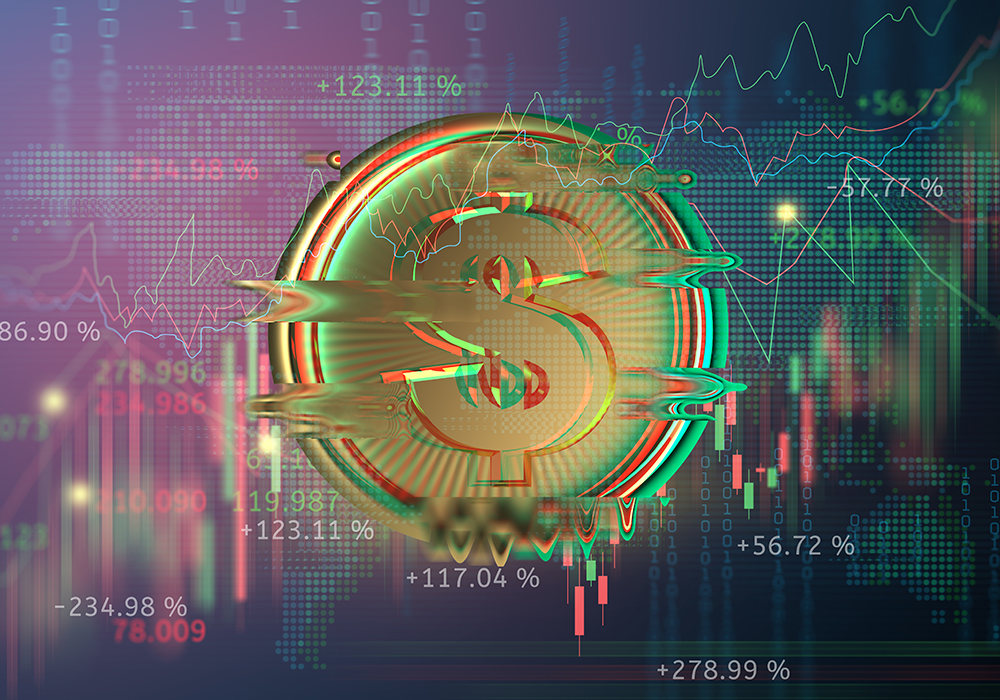The global Forex market is the world’s largest and most liquid fınancial market. With more than $6 trillion in trading volume on a daily basis, it provides investors with ample opportunities to make money from currency price changes. Different from regular stock or bond markets, Forex trading occurs 24 hours a day for five days a week and relates to the buying and selling of currencies all around the world.
In 2025, Forex trading remains the common preference for new and old investors, offering flexibility, high liquidity, and the potential for good returns. The following text will explain the dynamics of Forex trading, how it works, and the major strategies to succeed in the market this year.

What is Forex Trading?
Foreign exchange trading or FX trading is the buying and selling of different currencies. These currencies are always traded in pairs like EUR/USD or GBP/JPY. The main idea is to speculate or make a guess about the movement of the price of one currency in relation to another. For instance, if one expects that there will be strengthening of the Euro relative to the U.S. Dollar, then one has to buy EUR/USD.
Forex involves two currencies for every trade: one is the base currency, and the other is the quote currency. Take the EUR/USD pair, for example. Here, the Euro is the base currency, and the U.S. Dollar is the quote currency. The price shows how much of the quote currency is required to buy one unit of the base currency. The market of Forex is huge and has governments, central banks, businesses, multinational companies, and private citizens as participants.
Leverage is defined as the ratio of the amount of capital used in a transaction to the required deposit. A high degree of leverage can work against you as well as for you. Before deciding to trade forex, you should learn about leverage and how it influences your trading.
Why Trade Forex?
One major advantage of the Forex market is its high liquidity. It is actually the most liquid financial market there is, and thus you will be able to enter and exit your trades without having to think about any kind of trading issues. This also means that since there will always be a buyer or a seller of a currency pair, you will be able to trade flexibly as you buy or sell the currency pair.
Another cause that makes Forex trading very fevered is because of its accessibility. The market opens 24 hours a day 5 days a week so traders can join at any time they find convenient. This is especially attractive for those whose prime time for trade falls outside traditional market hours. In addition, the transaction costs for Forex brokers are mostly low whereby many earn money based on the spread the differential price between the buying and selling of the currency pair.
Currency values change depending on economic, political, and social factors. If a country’s economic data does not meet the market’s expectations or there is political instability, its currency value will be affected. This, therefore, means that besides being a very liquid market, it has some of the sharpest moves based on news flow in major economic data releases. However, volatility is a two-edged sword – it provides you with great trading opportunities, but also puts you at great risk of incurring huge losses. Just like in any other financial market, awareness of the risks involved is the key to making money.
How Does Forex Trading Work?
A person buys one currency and at the same time sells another. This is what happens in forex trading. The objective is to earn money by making a guess on whether the value of a certain currency will increase or decrease compared to another currency. The data for the global economy, political happenings, and changes in supply and demand, among other factors, move the price levels of currency pairs.
In Forex trading, a position is entered by buying or selling the currency pair. If the trader believes the currency will strengthen, he buys the pair; if the trader believes the currency will weaken, he sells. Normally, the transaction is done with a specified amount of one currency exchanged for a specified amount of another currency, based on the current exchange rate.
Currency pairs come in three categories: major, minor, and exotic. The most commonly traded pairs are called major. For example, EUR/USD, GBP/USD, and USD/JPY are major pairs. Pairs such as EUR/GBP and GBP/JPY (where the U.S. Dollar is not involved) are minor pairs. An exotic pair is a major currency uniting with an emerging market currency, such as USD/TRY.
Traders also use it to increase their buying power in the Forex market. The use of leverage will therefore mean that a trader can control a larger position with a smaller amount of capital. For instance, if the leverage were to be expressed as 100:1, then the trader will be in a position to control $100,000 with just $1,000 in margin. While leverage can most definitely amplify profits, the losses that one can incur are much larger if the market moves against their position. Therefore, effective risk management is crucial when one is using leverage.
Forex Trading Strategies for 2025
Throughout 2025, scalping, day trading, swing trading, and position trading maintain as some of the more popularly applied strategies by traders to wade the Forex market. You can explore some of the top beginner strategies outlined here to build a solid foundation in Forex trading.
Scalping is seen as a very short-term strategy whereby a trader may make multiple trades in a day to profit from small price movements. In other words, it would be most suitable for a trader who can make quick decisions and take precise market orders. Normally, a scalper holds a position from several seconds to minutes or hours. Though it may deliver the promise of goodly consistent profits, it is very capital and management intensive, hence relatively more expensive due to the increased number of total trades.
Day trading is what it’s called, entering and exiting within the same day of trading. The objective of a day trader is to capitalize on short-term price movements and to close the trade before the market closes, thus eliminating overnight risk. More importantly, it avoids the risk of after-hours price movements against the trader. On the flip side, day trading can be very labor-intensive because the trader has to keep a constant watch on the market.
Swing trading, being another popular approach, reflects trades typically lasting from several days to a few weeks. Swing traders try to take maximum gains from larger price movements, relying on the trend and reversal in the market. This process allows an individual to take things easy in comparison to day trading and scalping, but the market risk increases because the stock is held for a comparatively long period.
Position trading is a longer-term strategy. Traders may hold their trades for weeks, months, or even years. They base their decisions on fundamental analysis, looking at macroeconomic factors that could affect the value of that currency. In most cases, such trades require an in-depth understanding of economic indicators and trends. Thus, the advantage of position trading is fewer transaction costs since there are fewer trades.
Trend-following, which is another strategy used by them, is the realization of the existence of established trends in the market and trading along the trend line. Traders practicing trend-following strive to gain profits from sustained price movements over a long period, and such a condition may be facilitated by either long uptrend or short downtrend positions. The success of any trend-following strategy lies in the ability to spot trends early enough and manage risks effectively.

Risks in Forex Trading!
Although substantial profit opportunities are extended by Forex trading, the risks accompanying it are tantamount. The primary risk is market volatility. Prices of currencies may dramatically swing according to a country’s affair, or when economic data is released, and market sentiment. The volatility may further lead to enormous profits or heavy losses, contingent upon how the trader is taking the market.
Another is risk leverage. While magnify can profits, it also it losses amplify, potentially in more than resulting has been the original investment. must how works and responsibly it to take on avoid would be risk traders.
Factors that always have an impact on forex trading; market liquidity; where conditions prevail and the volume is low, then it might become difficult to execute a trade at the desired price. In addition to the various other risks, regulatory risk can also harm- that is to say the government and financial institutions change policies that have an impact on currency values.
Conclusion
Forex trading has many opportunities that come with a mix of challenges. A person has to know the functioning of the market, the various currency pairs, and an assortment of strategies to be used in trading. Traders will have to face volatility, coordinate with leverage, and work with the market changes in 2025.
Through appropriate approaches, discipline, and effective risk handling, traders can tap into the liquidity and profit opportunities presented by the Forex market. Be you a beginner or a pro investor, the important factors are coming up with a sound trading strategy and grasping the aspects of Forex trade for long-run progress.

















